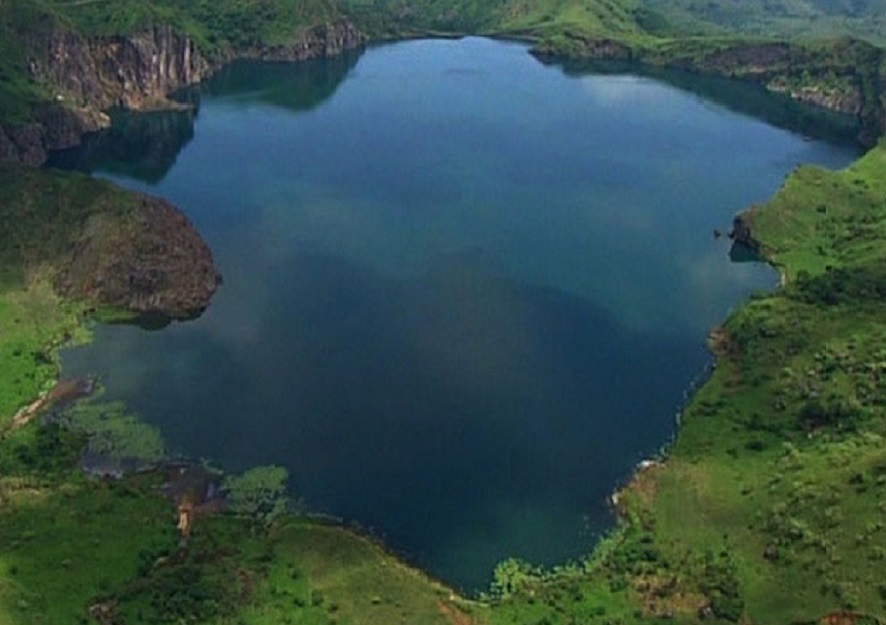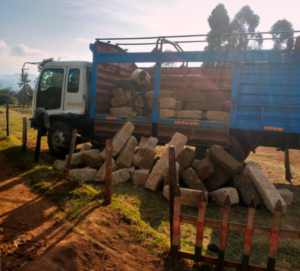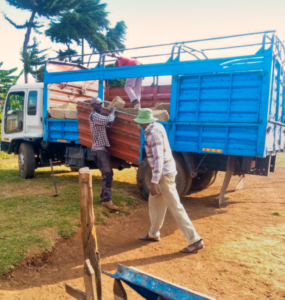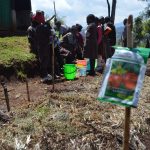Africa has share of natural disasters, from the most dangerous volcanoes in the world to the most dangerous lakes in the world.
Lake Nyos is a crater lake in the northwestern part of Cameroon meaning that the water there poured in long after the incredibly explosive volcanic eruption that made it ended fore more than 12,000 years ago. Located in the Oku volcanic plain along Cameroon’s line of volcanic activity, Lake Nyos is deep lake(682ft) with a pocket of magma lies beneath the lake and leaks carbon dioxide into the water, changing it into carbonic acid.
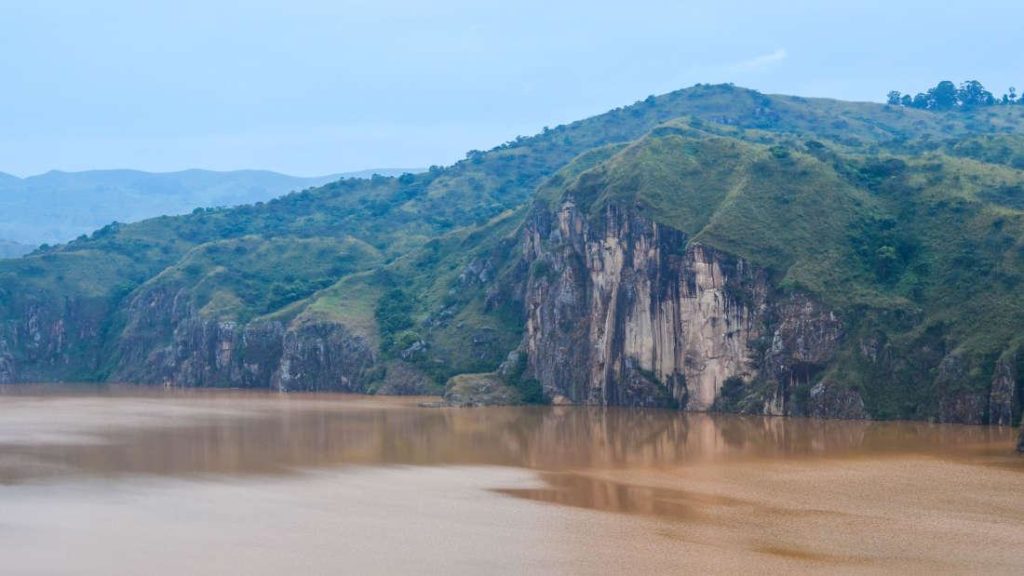
Lake Nyos suddenly released a large cloud of carbon dioxide on 21 August 1986, possibly as a result of a landslide suffocating 1,746 people and 3,500 livestocks in nearby towns and villages, up to 25 kilometres away. Some blamed on wrathful spirits, others chemical attack carried out by insurrectionists or the government itself. The report published on science in 1987, blamed the disaster on sudden, violent release of colorless, odorless carbon dioxide, which being denser than air that came out and killed animals and people many asleep.
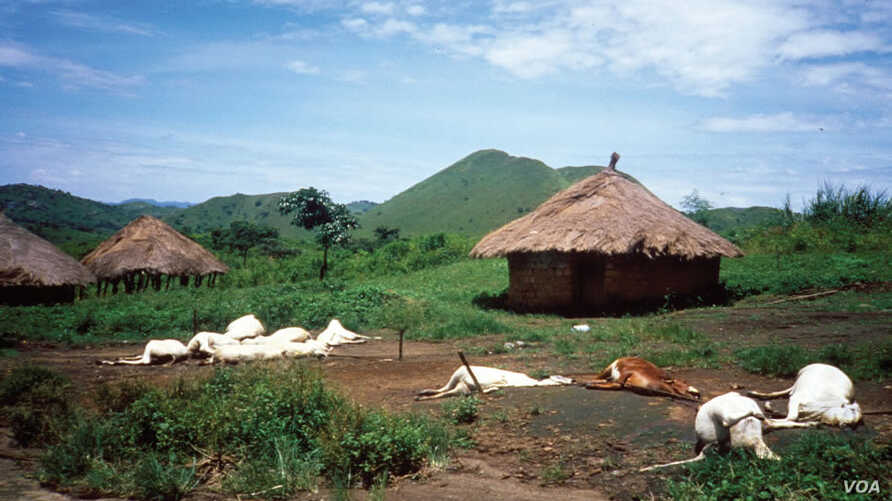
Lake Nyos is located above an extinct volcanic system with magmatic reservoirs containing plenty of carbon dioxide, this means magma still exist beneath the lake. Near the surface, the magma experiences less confining pressure, so the carbon dioxide escapes from the partly molten mass.
Normally, the gas should seep into the sedimemt, if there is lake. Over the time, this gas should leak out of water and escape into the atmosphere without causing any harm like the one Lake Nyos did. However, Lake Nyos is different, it has vast volume of water and water is still. The water pressure ensures that the gas remains dissolved within the lake, and a strongly defined layer of carbon dioxide enriched fluid was allowed to accumulate for several centuries without being disturbed by any wave action. Each unit of water had five times the amount of carbon dioxide dissolved within it.
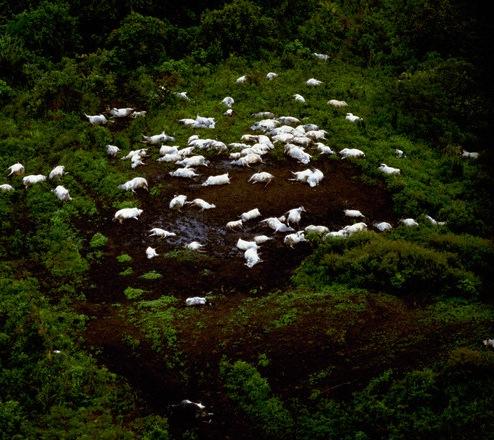
It formed a mist with the water vapor lingering in the air. It blanketed villages as far as 25 kilometers (15.5 miles) away, and entire villages were wiped out. As noted by Atlas Obscura, plenty of those sleeping on the floor died in the same rooms as those who were standing, initially without them realizing anything had happened.
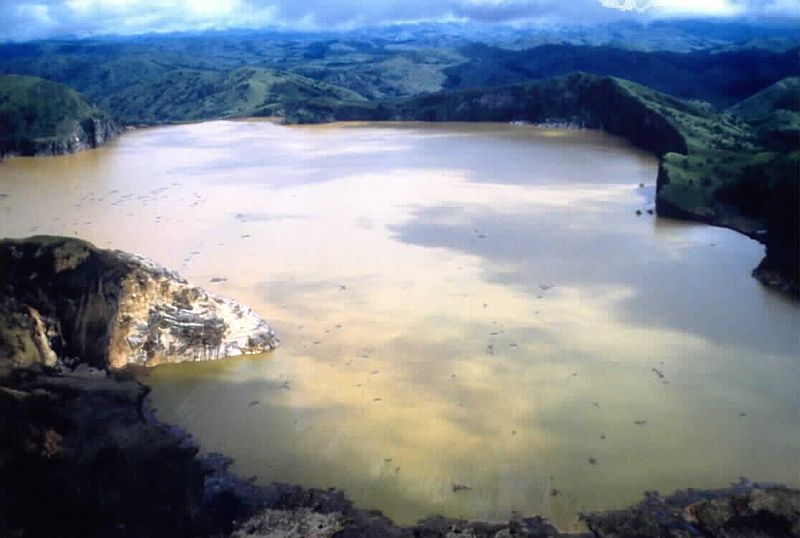
Nyos itself only had around 800 survivors when all was said and done, many of which suffered from vomiting and diarrhea, symptoms of carbon dioxide poisoning. Others had said they smelled gunpowder or had become warm all of a sudden – olfactory and thermoceptionary illusions brought on by the poisoning.
A similar limnic eruptions took place in 1984 also in Cameroon over Lake Monoum, killing dozens. Surprisingly, some villagers living near Lake Monoum claimed that evil spirits escapes periodically from the lake to kill people.
Lake Kivu on border between Democratic Republic of Congo and Rwanda is 2,000 times bigger than Lake Nyos and has 2 million people people living by its periphery. This lake also poses similar danger with more casualties as it is full of methane and carbon dioxide, trapped by a dense layer of salt.
Methane is a valuable source of cheap energy, so both countries have agreed to mine it as part of the Kivuwatt Biogas Project. They have to be extremely cautious: because as noted by researchers, if the methane deposits are violently disturbed, it could rapidly degas into the atmosphere.
In recent years it has been suggested that additional oil exploration should also take place within the lake. Experts issued a serious warning, noting that it’s not possible to eliminate the risk of a cataclysmic gas release.
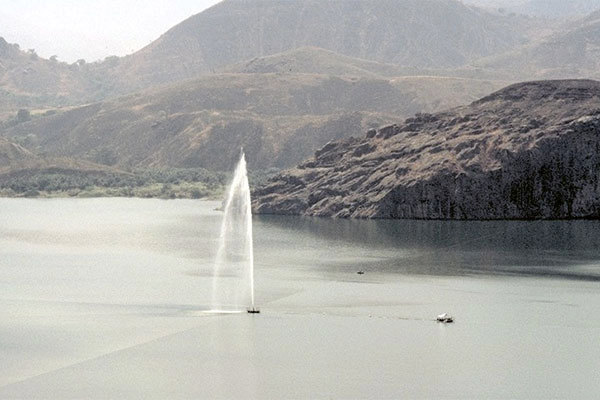
A degassing tube was installed in 2001 that siphons water from the bottom layers to the top, allowing the carbon dioxide to leak in safe quantities. Two additional tubes were installed in 2011.
Today, Lake Nyos still poses a threat because of its natural wall is weakening. A geological tremor could cause this natural levée to give way, allowing water to run into downstream villages all the way to Nigeria and allowing large amount of carbon dioxide to escape.

